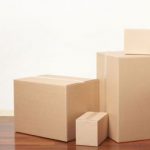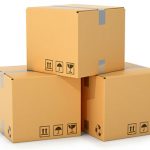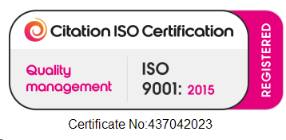Cardboard Boxes – Recycling cardboard could be a necessity for you in today’s world. We cannot tend to be irresponsible and litter an excessive amount of and hence we must always rummage around for methods to recycle. If you’re recycling the cardboard in your home, here are the items that you just can do.
Keep it dry
Keeping it dry is an extremely important subject when it comes to cardboard recycling. When it has moisture content, it becomes impossible to dry it off.
Break it down
Flatten cardboard boxes the maximum amount as you’ll. this may conserve space in recycling containers and make them easier to move. On the flip side, failing to interrupt down boxes can present complications for the particular cardboard-recycling machinery.
Remove plastic and other contaminants
Be sure to get rid of plastic, polystyrene, and other contaminants from your cardboard before recycling. While you’re certainly welcome to get rid of any tape or labels that will appear on your cardboard, they’ll be removed quite easily at recycling facilities.
Establish a system
Have a system in situ to gather cardboard quickly and efficiently before it becomes trash.
Store responsibly
Once collected, place all cardboard waste in a very closed-topped bin, and store these bins in a very clean, dry place.
Store strategically
Any cardboard that contains grease or other contaminants can’t be recycled, therefore the next time your boss buys pizza for the staff, avoid combining those greasy boxes with dry, non-contaminated cardboard.
It’s not just grease, either
Food is one amongst the worst contaminants within the cardboard-recycling process, especially when that food involves oil. Why? Because when cardboard is recycled, it’s mixed with water–and as we all learned in science class, oil and water don’t mix.
Use a cardboard baler
A baler is cost-effective thanks to compact large quantities of cardboard and might be cheaper and more environmentally friendly than a standard dumpster.
Use it as transport
If you have got other recyclables–newspapers, glass, plastic, etc.–use cardboard boxes to move them to the closest drop-off centre. Then you’ll recycle the boxes–assuming you retain them dry and flatten them, that is.
Take it outside
Not all of your cardboard should be recycled within the traditional sense. In fact, cardboard can serve in a very style of gardening and compost capacities. seek advice from those chargeable for your office landscaping and offer them excess cardboard to use as mulch, or just donate it to a compost facility.
If you’re taking the recycling process to an industry, this can be how the commercial sector would sleep with. it’s important for all the industries to recycle their cardboard material and to reuse it.
Collection
“Collection” is that the start in recycling cardboard. Majority of the gathering points include trash bins, stores, scrap yards, and commercial outlets that generate cardboard waste. At this time, there are certain varieties of cardboard that are accepted while some aren’t looking on how they were used or manufactured. for example, cardboard that’s waxed and coated or used for food packaging aren’t accepted in most cases as they undergo different specialized recycling process.
Sorting
Once the corrugated boxes gain the recycling facility, they’re sorted in step with the materials they’re manufactured from. In most cases, they’re classified into cardboard and boxboard. Boxboards are those that are thin like those used for cardboard drink containers or cereals boxes while corrugated boxes are bigger and stiffer commonly used for packaging transport goods. Sorting is vital since paper mills manufacture different grades of materials supported the materials being recovered.
Shredding and Pulping
After sorting is finished, the following step is shredding then pulping follows. Shredding is finished to interrupt down the cardboard paper fibres into minute pieces. Once the fabric is finely shredded into pieces, it’s mixed with water and chemicals to breakdown the paper fibres that turn it into a slurry substance. This process is what’s termed as pulping.
Filtering, conterminal removal, and De-Inking
The pulp material is then taken through a comprehensive filtering process to induce obviate all the foreign materials present moreover as impurities like strings, tape or glue. Plastics float on top while the heavy metal staples fall to the underside after which they’re eliminated. the following process, de-inking, involves putting the pulp in a very floatation device made from chemicals that remove any sort of dyes or ink via a series of filtering and screening. This step is additionally called the cleaning process because it cleans the pulp thoroughly to make sure it’s ready for the ultimate processing stage.
Finishing for reuse
At this stage, the cleaned pulp is mixed with new production materials after which, it’s put to dry on a flat conveyer and heated cylindrical surfaces. because the pulp dries, it’s suffered an automatic machine that press out excess water and facilitates the formation of long rolls of a solid sheet from the fibres called linerboards and mediums. The are glued together, layer by layer to create a replacement piece of cardboard. Linerboards are then glued to the medium because the thin outer covering.









